I Took a Solo Road Trip in the Mustang Mach-E Using Public EV Chargers. This is How It Went
I was determined to take this fun-driving EV on a road trip, even though the idea made me nervous. Here's what I learned that I’ll use next time.
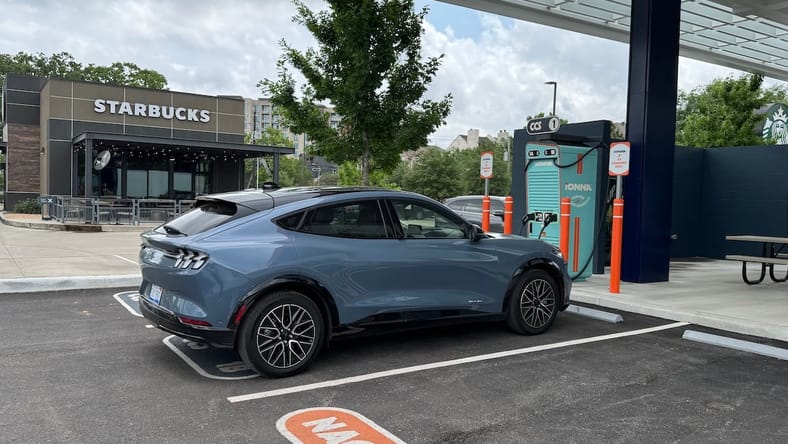
Standing at the top of a climbing wall, nothing but a carabiner and a couple of ropes between me and the ground several dozen feet below, I felt terror-stricken. With the help of instructors, I’d climbed up the wall, shaking and unsure with each step. Somehow, I thought once I got to the top, it would be downhill from there. Little did I realize I had to swing across the abyss (really, a tightly knit safety net), holding on to reach the platform on the other side.
I thought I was going to puke. The instructors were helpful and encouraging, and so was the entire 8th-grade class. We were on a long-awaited field trip to Outward Bound. Most in my class eagerly climbed, scampered, and swung through the obstacles. Me, not so much. I lagged, fretted, and tried to hold back the tears.
And then, as the instructors started to cheer me on more loudly, so did my classmates. You can do it, they cheered. Come on, Scotty! You got this! Finally, realizing that I didn’t have any other choice, I took the plunge, jumping off the ledge, swinging and holding on, then landing with a solid thunk on the other platform. Everyone cheered, and I became an accomplished member of the tribe.
That’s not so far from how I felt, and how I hoped I’d feel, when I started my first solo road trip in the Mustang Mach-E and had to depend on public EV chargers.
This story is 100% human-researched and written based on actual first-person knowledge, extensive experience, and expertise on the subject of cars and trucks.
A Long-Term Test Drive Demands a Road Trip, Right?
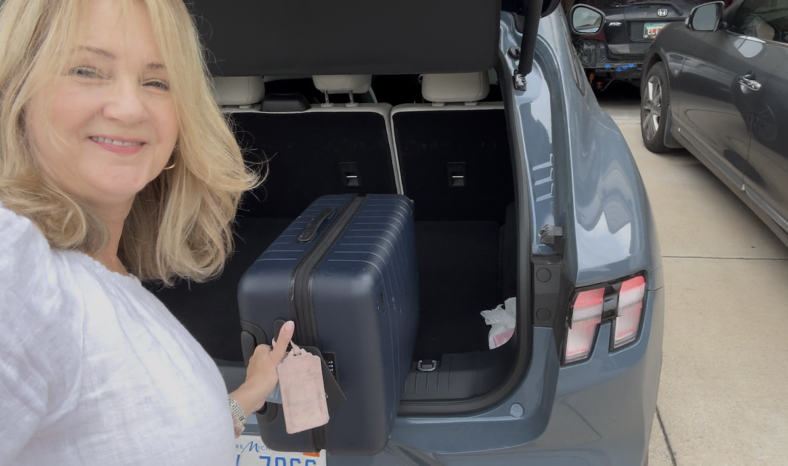
A couple of months ago, I began a long-term test drive in a Mustang Mach-E. My goal was to learn my way around it as an owner would, to use the app to manage the car, to charge it, to get used to charging at home, to learn what it’s like to navigate the Tesla Supercharger network, and to take road trips. Tesla owners have been doing this for years. So have Mustang Mach-E owners, and most of that time was without Tesla chargers. If they can do it, so can I, I reasoned, but still unsure.
Finally, nervously, I embarked on the first of those journeys.
230 Miles of Range and 170 Miles to Houston. What’s to Worry About?

Well, the 75 MPH speed limit for starters, high-speed driving can dent your range. Also, the hot, humid day and the fixed glass roof on the Mach-E, a feature I value greatly and want in every car I ever drive, but it nudges you to lower the temperature as the day gets hotter. Then, there’s BlueCruise hands-free driving; it’s great for a relaxing drive, but it isn’t as efficient as one-pedal driving since it keeps a constant speed.
And then, the car was only charged to 80%, so really, I had about 200 miles of range, as well as the uncertainty of being able to find public EV chargers. Of course, there are lots of chargers between my home and the hotel where I’d be staying.
According to PlugShare, I would drive by 15 DC fast chargers on my route between Austin and Houston, where I was heading for a work event. I planned for extra travel time so I could sit, relax, and recharge, and not feel rushed. Also, I had a quick side trip planned and would need to be sure I had enough charge for a quick 5-mile trip off the main route.
Lesson #1: Range is relative; it depends on your speed, outside temperature, vehicle load, and other factors. Take it all into consideration and give yourself room for flexibility.
Read: I’m Done With Tesla. What Are My Options? 25 Great Tesla Alternatives—and That’s Just a Start
Using the Mach-E’s Navigation to Find EV Chargers

In dreaming of those road trips, I’d assumed I’d set my destination on the app and then pick the charger stations where I’d like to stop. And that was my first hiccup. The FordPass app, which is being revamped, doesn’t have a map function, so you can’t see public chargers on your route. You can see them, however, on the car’s navigation system, though not until you’re in the car and on your way. I hope Ford decides to add the map function back to the app.
I also expected that when I set my destination that I’d see charge options pop up along the route and I’d be able to pick the ones I want to use. But it doesn’t work that way.
Once I began driving (but not before), the system notified me that I’d need to charge on my route, then asked if I wanted it to automatically select the charge stations or if I wanted to choose from a list. Since I was driving, I chose ‘automatic’, not wanting to look at a list while driving.
As I got closer to Houston, the system navigated to the charge station it selected. But it wasn’t the one I wanted to stop at; it was sending me to a Tesla charger, but I wanted a non-Tesla station. So I pulled over and found a charger nearby using the PlugShare app and confirming the destination on Google Maps. These two apps gave me confidence that I was going the right way and that I’d be charged up and on my way soon.
Lesson #2: Have your own back. Relying on a single app, map, or plan leaves room for error under any circumstances. Using Google, PlugShare, Ford’s navigation, and my own good sense gave me comfort and prevented an error.
Read: Ford Mustang Mach-E: Everything I Expected and More
Planning Beyond Range: Will I Be Able to Charge Where I Want?
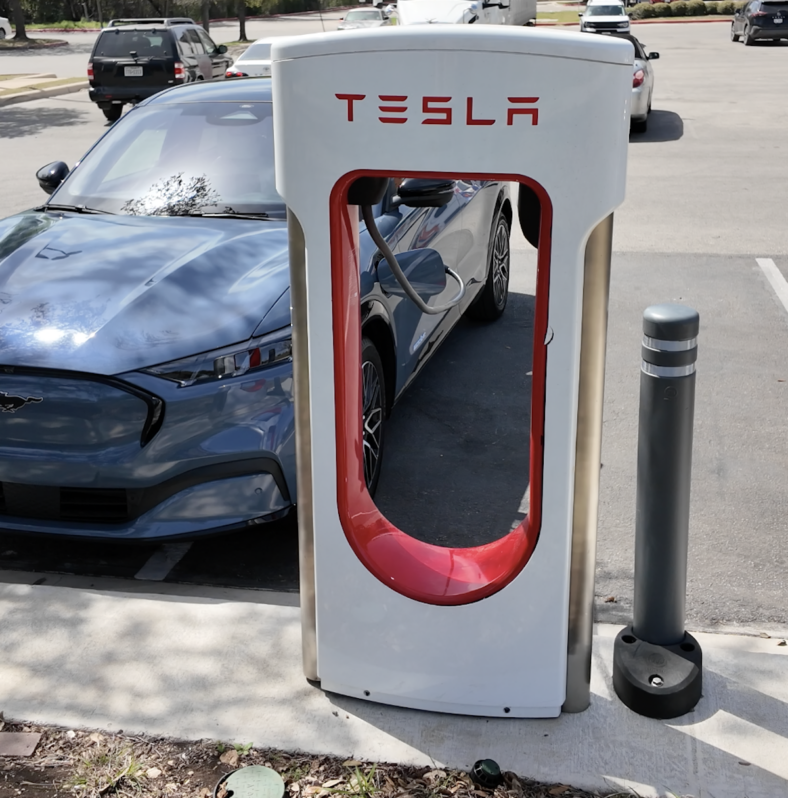
A friend told me of a road trip with a colleague that left her sitting in a dark parking lot late at night, waiting for the car to charge.
That sounds fun, right? But that sort of experience is avoidable with planning. So, as I planned my trip to Houston, I searched for charging stations near my hotel where I could fully recharge before heading home a few days later. And rather than risk traffic, weather, broken chargers, or other inconveniences on drive day, I decided to charge right before getting to my hotel.
And it worked out great. The charger station was empty, it was in a nice area, and it had a comfortable place to sit for 15 minutes to recharge the car.
Lesson #3: Planning is always your friend; don’t wait until you need to charge to look for a charger; if you can, know when you’ll need them and where you want to be.
Related: The 2026 Subaru Uncharted is Everything an Electric SUV Should Be
Finding the Fun EV Chargers: Buc-ees and Ionna
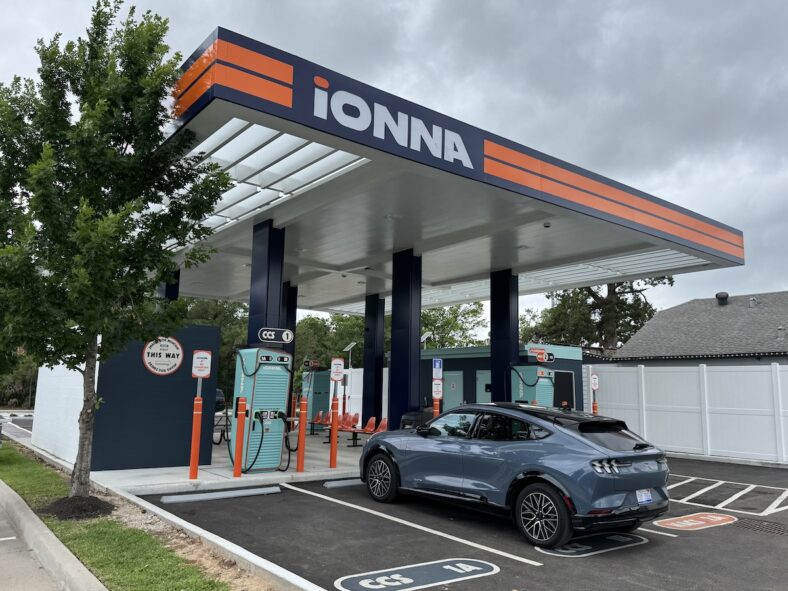
This is a fun road-trip game, and one we used to play with our kids when they were little: Find all the fun road-trip stops along the way. Our trips took us to hotels with fun pools, stops at Wegman’s and Wawa, and of course, Buc-ee’s in Texas and beyond.
Turns out, EV charging isn’t all that different. Since you’ll be there for a bit, it makes sense to hit the snack aisle, the restrooms, and take in the entertainment. Of the four charger stations I visited on this trip, I really loved Ionna and Buc-ee’s.
Ionna is a charging consortium funded by a number of car companies, including Ford, GM, Stellantis, BMW, Honda, Hyundai, Kia, Mercedes-Benz, and Toyota. Together, they came up with a plan for a pleasant charge experience in a location that makes sense.
The one I visited in Houston had a nice covered seating area, restrooms that required scanning a QR code to use, drink machines, and picnic tables. There’s a Starbucks on one side and a restaurant on the other (which looks as if it’s between owners…). In all, it was comfortable and convenient in a central neighborhood, not that far from downtown.
Buc-ee’s, of course, is a destination on its own, a food and fun-filled playground that offers plenty of reasons for leg-stretching and wallet-opening. Of the Buc-ee’s in Texas, many have Tesla Superchargers or other branded chargers, fully embracing the EV road-tripper. I liked how the EV chargers were not hidden behind a fence or next to the dumpsters, and how there were dog sanitation stations in the charger area, too. So very thoughtful!
Lesson #3: Planning allows you to stop and do the fun things on your journey. Do that.
Missed Opportunities, and Missed Charging, On the Road
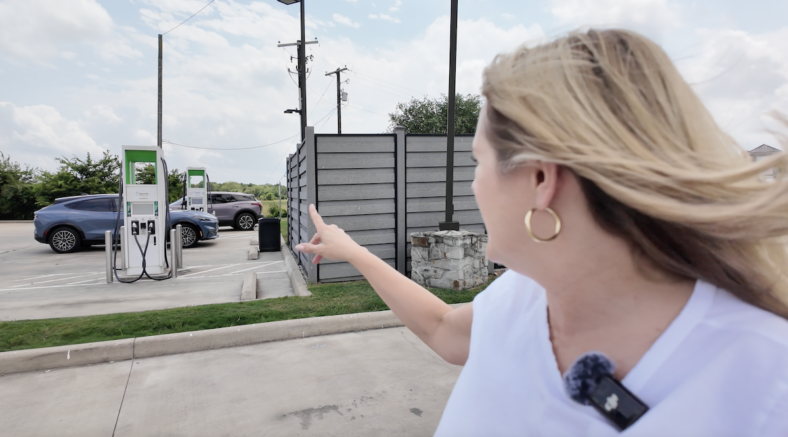
This was probably the most frustrating part of the whole trip. Remember those 15 public charging locations I drove by? Not one had a sign. Not one.
There were signs for gas, snacks, fast food, and more, but none for EV charging. Hmmm. Considering that EV drivers spend longer at a charge location than a refueling car does, it might reason that targeting EV drivers with food, beverages and bathrooms makes a lot of sense.
My third stop showed another lost opportunity. The EV chargers were between two convenience stores—empty convenience stores, I might add— hidden behind a fence that surrounded the transformer. It took me a minute to find the chargers, though the four cars in the area tipped me off. It seems insane to have no sign, no indication that there are chargers, and then hide them behind a fence. Not a recipe for success.
Related: The Best EV Charger is Portable, Cheap and Easy to Use At Home
You Can Do This, and It’s Not Hard

I’ve always admired how Tesla owners figured out car charging even as the company built its network. In the end, it’s clear: determination is what matters. If you want a thing, you have to figure out how to make it work for you.
I love driving the Mustang Mach-E. It’s a beautiful cabin with a responsive and fun drive experience, so I was determined to find chargers, to charge, and to ensure I had enough juice to make the rest of the trip without worry. So I charged up, then cheered myself on.
I was glad I made the plunge into EV road tripping, and now, I’m an accomplished member of the tribe.
More About:Car Culture
